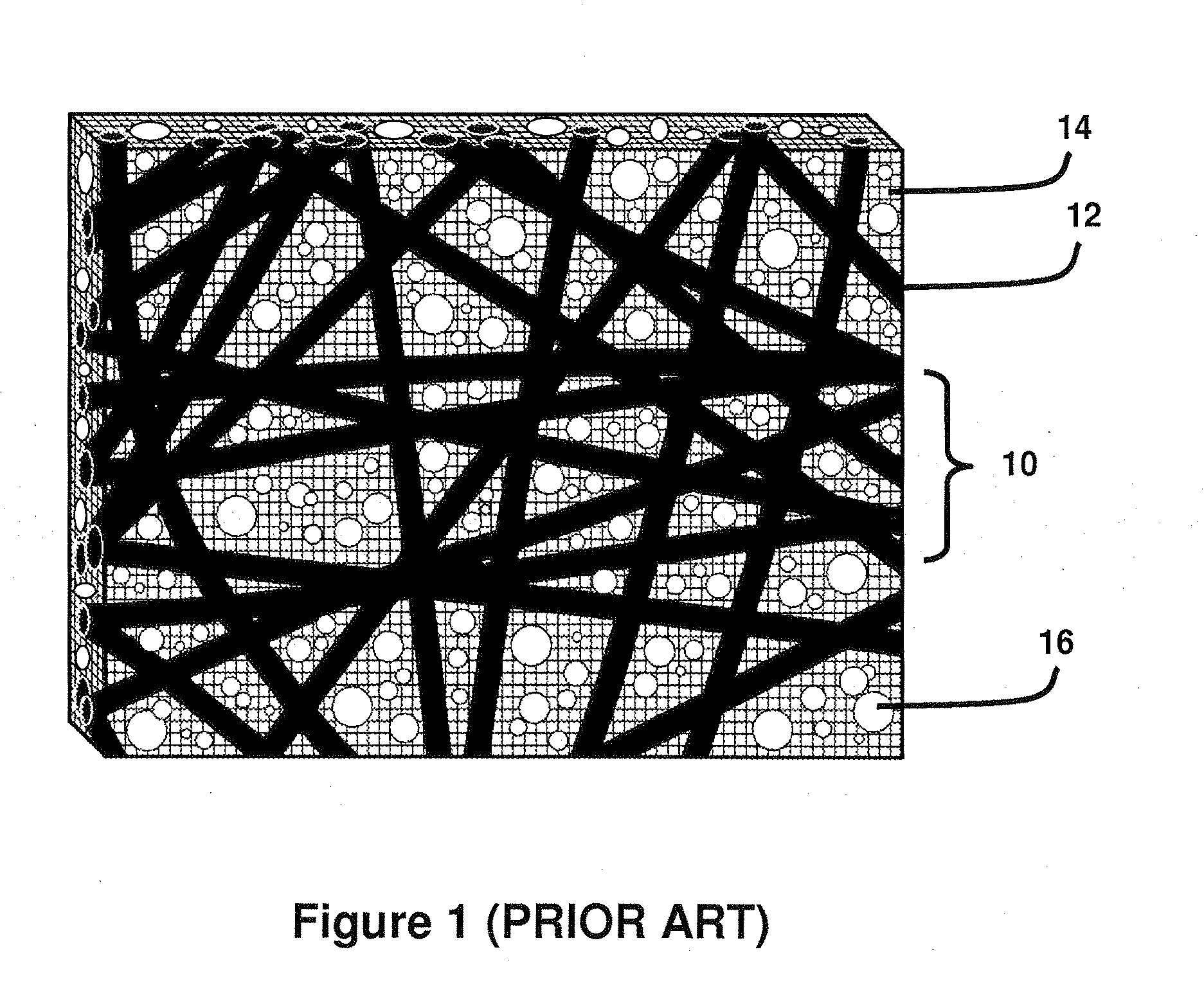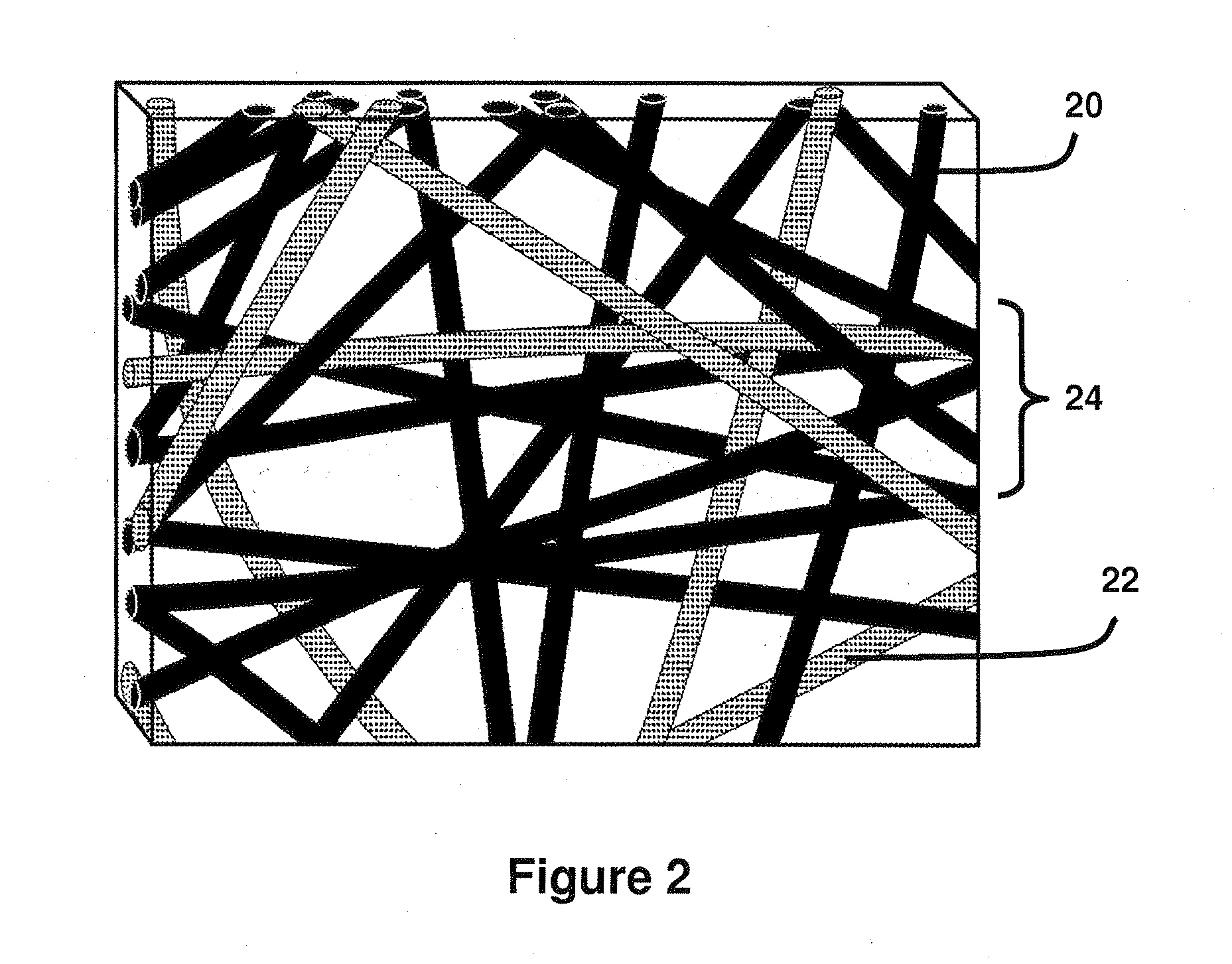Porous interpenetrating polymer network
a polymer network and porous technology, applied in the field of porous interpenetrating polymer network, can solve the problems of low reproducibility and unpredictable permeability characteristics, difficult stabilization of porogen suspension in the polymerization mixture, and complicated methods. achieve good diffusional flow characteristics, good convective flow, and good mechanical strength
- Summary
- Abstract
- Description
- Claims
- Application Information
AI Technical Summary
Benefits of technology
Problems solved by technology
Method used
Image
Examples
example 1
Engineered Porosity for Predesigned Pore Formation: Case Studies for the Macroporous Properties of a Porogenic Support Fabric (PSF) and a Resulting Interpenetrating Polymer Network (IPN)
[0221]Target properties of an interpenetrating polymer network (IPN) product were used to engineer the Porogenic Support Fabric (PSF) substrate. Material basis weight, fiber blend weight ratios, and final calendered material thickness for manufacturing a suitable PSF substrate were derived based on the desired properties of the final IPN product such as (a) void volume or porosity, (b) volume fraction of inert fiber, and (c) volume fraction of the functional polymer.
[0222]As shown in the case studies below, material thicknesses from 100-600 micrometers were evaluated with an inert fiber network (IFN) fixed at 5% (and 10%) volume fraction of the final IPN substrate and a dispersible fiber network (DFN) fixed at 35% volume fraction of the final IPN substrate. These data were derived based on (a) the kn...
case 1
[0224]
ConventionalChromatographyABCDEFColumnIPN ThicknesstNWmicrons100200300400500600Volume % Inert fREBAR% 5% 5% 5% 5% 5% 5% 0%Volume % voidfPLA%35%35%35%35%35%35%35%Volume % polymerfAGR%60%60%60%60%60%60%65%PSF Basis WeightrhoNWgm / m251101152203253304PSF Fiber RatioRNWWgt. Ratio6.36.36.36.36.36.3
case 2
[0225]
ConventionalChromatographyABCDEFColumnIPN ThicknesstNWmicrons100200300400500600Volume % Inert fREBAR%10%10%10%10%10%10% 0%Volume % voidfPLA%35%35%35%35%35%35%35%Volume % polymerfAGR%55%55%55%55%55%55%65%PSF Basis WeightrhoNWgm / m258115173230288345PSF Fiber RatioRNWWgt. Ratio3.23.23.23.23.23.2
PUM
| Property | Measurement | Unit |
|---|---|---|
| pore size | aaaaa | aaaaa |
| thickness | aaaaa | aaaaa |
| melt temperatures | aaaaa | aaaaa |
Abstract
Description
Claims
Application Information
 Login to View More
Login to View More - R&D
- Intellectual Property
- Life Sciences
- Materials
- Tech Scout
- Unparalleled Data Quality
- Higher Quality Content
- 60% Fewer Hallucinations
Browse by: Latest US Patents, China's latest patents, Technical Efficacy Thesaurus, Application Domain, Technology Topic, Popular Technical Reports.
© 2025 PatSnap. All rights reserved.Legal|Privacy policy|Modern Slavery Act Transparency Statement|Sitemap|About US| Contact US: help@patsnap.com



